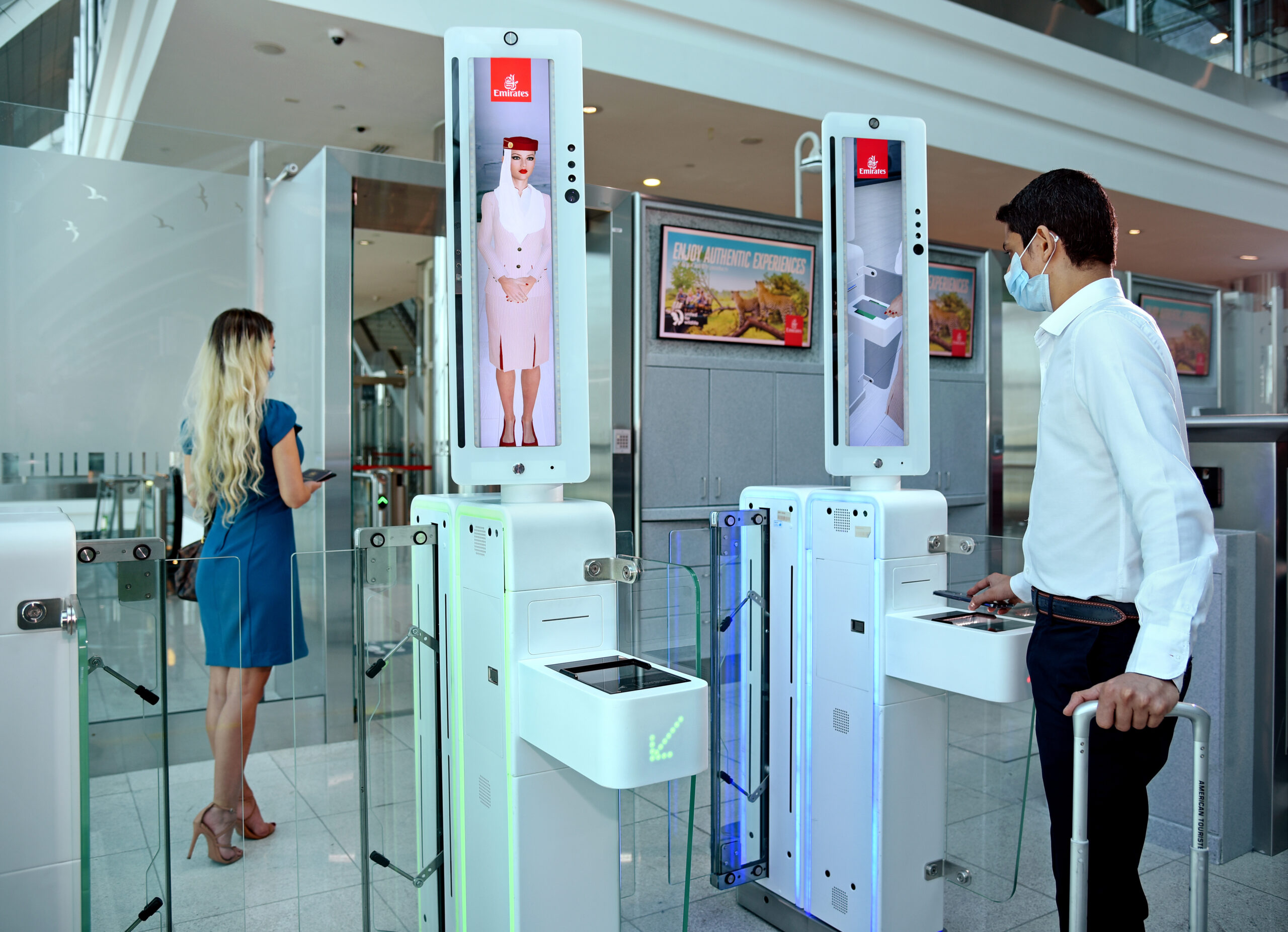Facial recognition checkpoints give Emirates passengers a ‘touchless’ transfer through Dubai airport, and other airlines are following suit. Rose Dykins reports
In October, Emirates integrated a “biometric path” into its facilities at Dubai International airport, so that passengers can have a contactless experience when travelling through its terminals.
Starting from specific check-in areas and ending at boarding gates, the innovation aims to improve traveller flow through the airport by requiring fewer manual document checks and less queuing.
The biometric path uses a mixture of facial and iris recognition technology to verify passengers’ identity when they check in, complete immigration, enter an Emirates lounge or board their flight. The idea is to create a more hygienic, contactless way to move through the airport, by reducing human interaction throughout the process.
During the viral age, of course, people will need to remove their face masks for the technology to work, making it slightly less streamlined than desired.
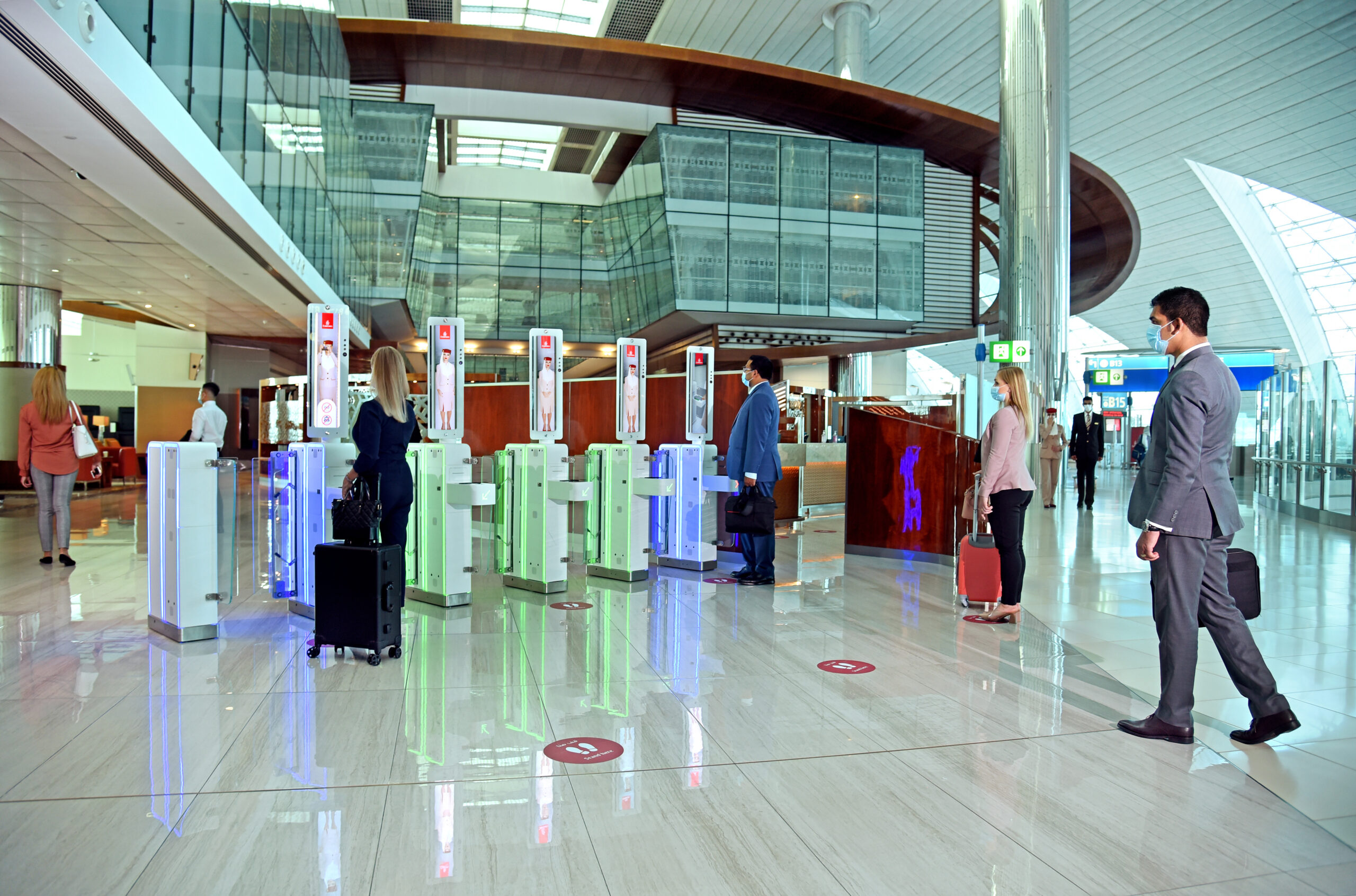 Passengers can see where the technology has been integrated, as it is clearly illuminated. Emirates says its plans to install more units at each touchpoint in the future.
Passengers can see where the technology has been integrated, as it is clearly illuminated. Emirates says its plans to install more units at each touchpoint in the future.
The current touchpoints along the biometric path at Dubai International airport are at certain check-in desks in Terminal 3, at Emirates’ premium lounge in concourse B, at selected boarding gates and at immigration gates, where there is a “Smart Tunnel”.
A project by the General Directorate of Residence and Foreign Affairs in Dubai (GDRFA) in partnership with Emirates, the Smart Tunnel is a world-first for passport control. It lets passengers simply walk through a tunnel, where they are cleared by immigration authorities without human intervention or needing a passport stamp.
Emirates is also the first airline outside the US to get approval for biometric boarding from the US Customs Border Protection. Customers flying with Emirates from Dubai to the US will be able to choose to use facial recognition technology at the departure gates.
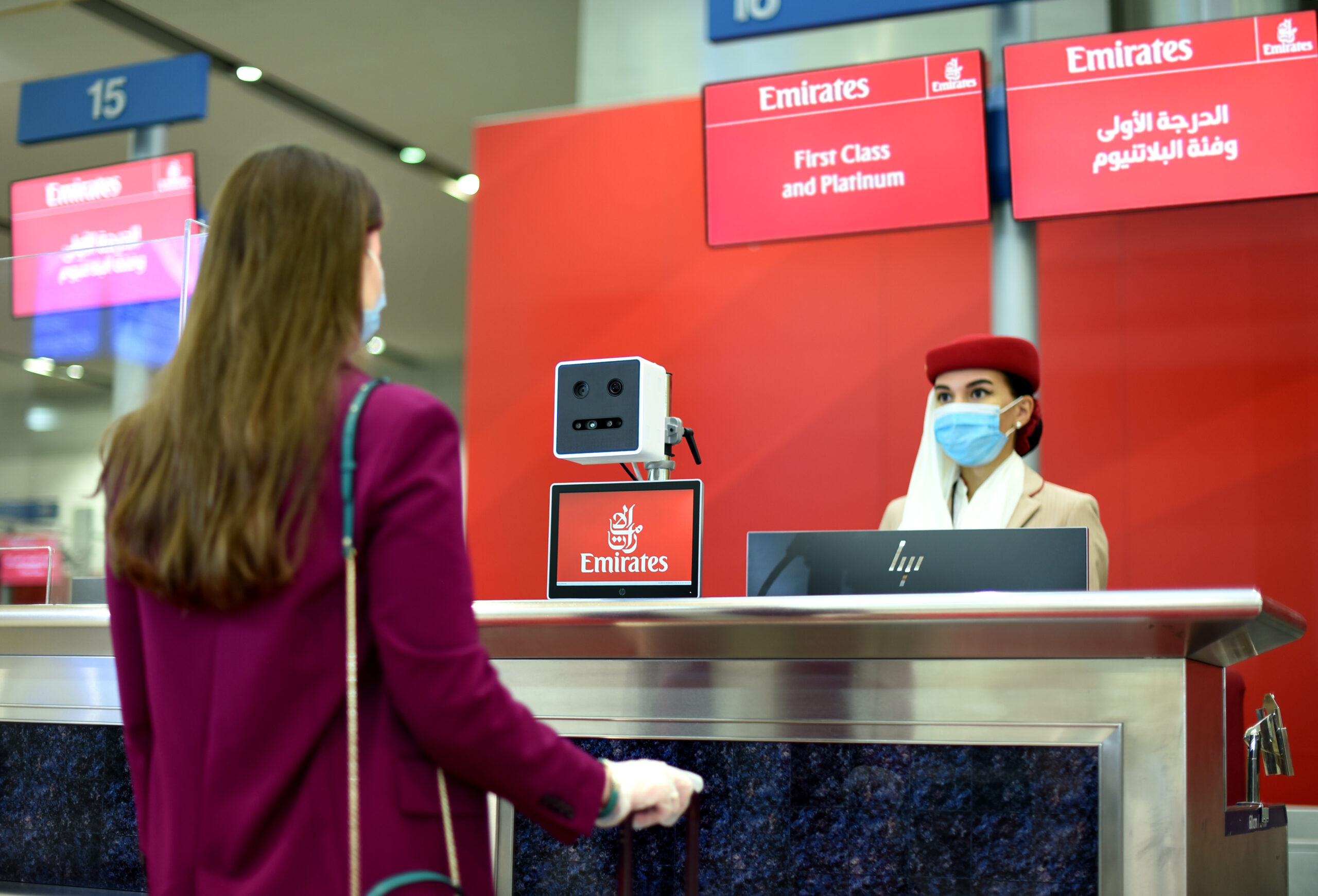 “We have always focused on providing a great customer experience at any touchpoint and now it is more vital than before to make use of technology and implement products, and introduce processes that focuses not only on fast tracking customers, but more importantly on health and safety during their travel journey,” says Adel Al Redha, Emirates’ chief operating officer.
“We have always focused on providing a great customer experience at any touchpoint and now it is more vital than before to make use of technology and implement products, and introduce processes that focuses not only on fast tracking customers, but more importantly on health and safety during their travel journey,” says Adel Al Redha, Emirates’ chief operating officer.
“The state-of-the-art, contactless biometric path is the latest in a series of initiatives we have introduced to make sure that travelling on Emirates is a seamless journey and gives customers added peace of mind.”

Emirates’ biometric path is the latest initiative from the airline to provide a contactless journey using smart tech. The airline recently introduced other services including self-check-in and bag drop kiosks at Dubai International airport for a smoother airport experience.
Automated Gateways
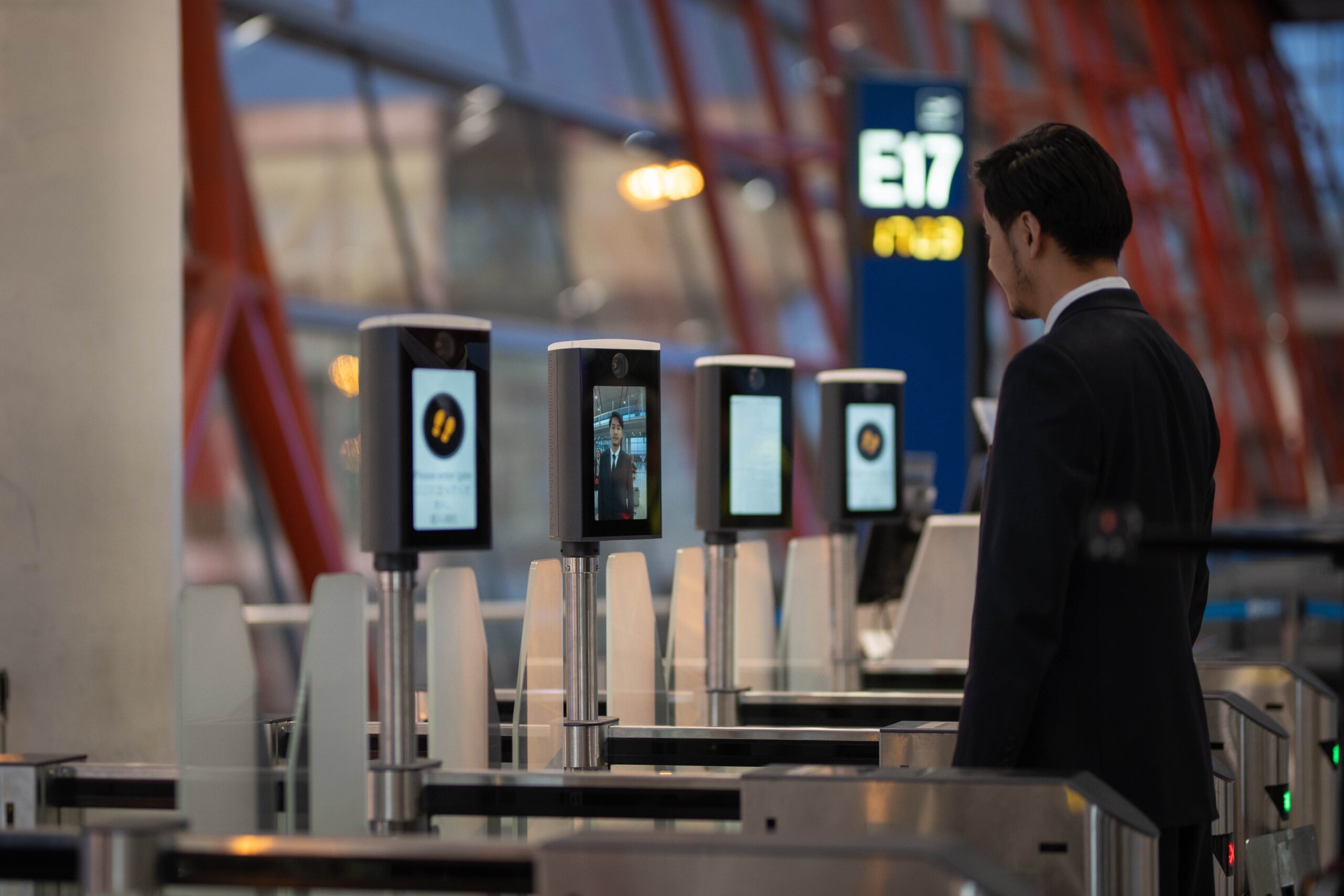 As Globetrender predicted in its Future of Business Travel report (free to download), Automated Gateways are becoming a reality. We wrote in our report published in summer 2020:
As Globetrender predicted in its Future of Business Travel report (free to download), Automated Gateways are becoming a reality. We wrote in our report published in summer 2020:
“Using your face as a passport will soon be a much more common feature of the business travel experience. A growing number of airports have been introducing biometric technology to streamline the passenger journey through the terminal, and that trend is set to accelerate swiftly in the post-Covid world as authorities seek to mitigate risk and limit human interaction.
“Using facial recognition to clear immigration is not new, but it’s in the whole end-to-end journey from curb to gate that great strides are now being taken. Delta Air Lines was one of the pioneers of this, in late 2018 launching the first ‘biometric terminal’ in the US at its Atlanta hub, allowing passengers to check in, drop their luggage, pass security and board using facial recognition.
“The same year, SITA, an IT company specialising in aviation, reported that 71 per cent of airlines and 77 per cent of airports were planning major programmes or research into the technology. SITA chief executive Barbara Dalibard believes the Covid-19 crisis will speed up adoption, telling travel tech news site PhocusWire in July: ‘I was talking to a group of customers recently and they said it would be major for them, to make sure they could implement biometrics as quickly as possible.’
“SITA’s Smart Path facial recognition system is in use at the likes of Beijing Capital, Qatar’s Hamad International and Kuala Lumpur.”
Which other airlines and airports offer biometric checks?
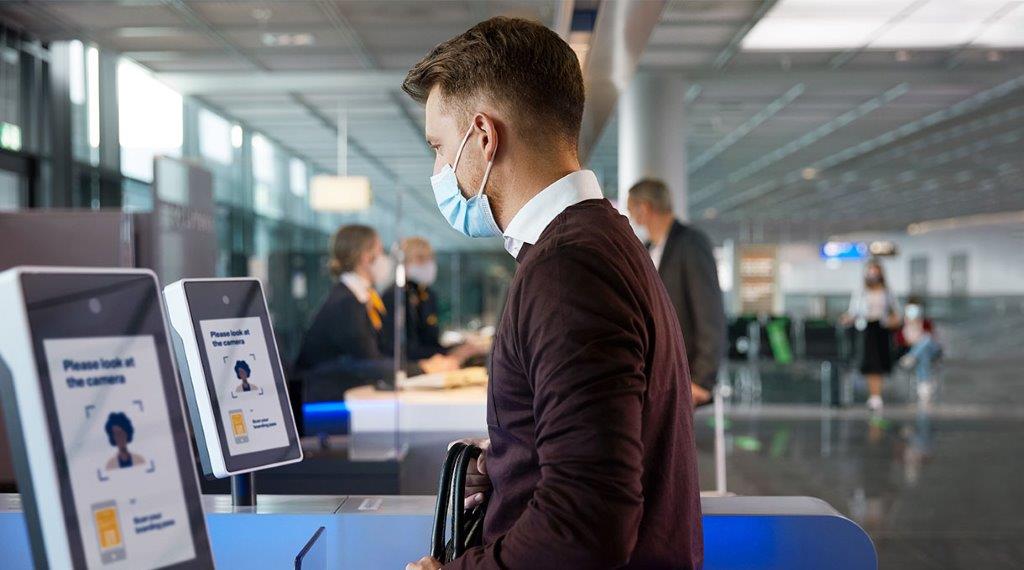 In November 2020, Lufthansa became the first airline to install Star Alliance’s biometric facial-scanning service at boarding and security gates at Frankfurt and Munich airports.
In November 2020, Lufthansa became the first airline to install Star Alliance’s biometric facial-scanning service at boarding and security gates at Frankfurt and Munich airports.
Star Alliance states on its website: “Passengers enrol only once and can then use the service with any participating airline at any participating airport. Once registered, they can pass through both security access and boarding gates in a touchless manner – an important health and hygiene safety measure in times of Covid-19. In future, this service will be extended to other airport touchpoints, such as baggage drop and VIP lounges.”
In December 2020, Air Canada launched facial-recognition-based biometric boarding for flights from the US to Canada. The technology is available for travellers departing San Francisco International airport with plans to progressively roll it out for customers at other US airports where the airline operates.
At the same time, Taiwan’s EVA Air joined the US Customs Border Protection’s biometrics exit programme. Passengers departing San Francisco on the Star Alliance carrier can now board aircraft simply by having their faces scanned instead of showing documentation.
At the moment, the biometrics exit programme is deployed at 20 US airports. It securely matches passengers’ faces with their passport or visa photo. EVA Air is planning to also roll out biometric boarding at five other US airports it flies into, including Chicago, Houston, Los Angeles, New York and Seattle.

